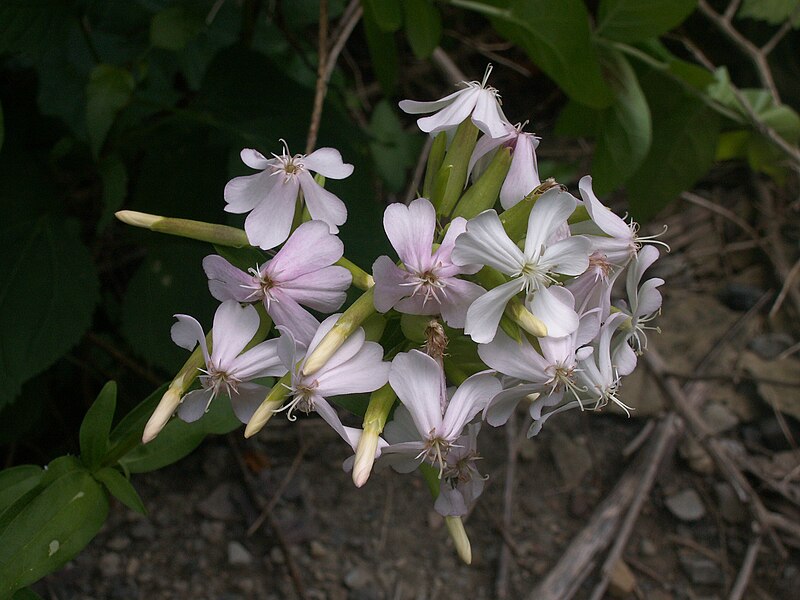
The bane of allergy-sufferers everywhere, Common Ragweed is wind-pollinated: instead of large attractive flower heads, it relies on myriad small pollen-dispensers. The plant in full bloom passes nearly unnoticed, even in large drifts. It grows everywhere—in cracks in the pavement, in vacant lots, at the edge of a yard, in the middle of your garden. These plants were growing in the Seldom Seen Greenway, where they were in bloom in the middle of August.
More pictures at the full article on Ambrosia artemisiifolia.
 Photographed July
6.
Photographed July
6. Also called Bouncing Bet, this cheerful pink came over as a garden flower, but is now thoroughly established along roadsides and at the edge of the woods. The blooming season begins in July. The flowers are very pale pink verging on white; the double forms Gray mentions seldom or never occur in the wild plants seen around Pittsburgh. The name “Soapwort” reminds us that a lathery soap can be made from the plant; it is, however, poisonous.
More at the full article on Saponaria officinalis.

This is probably your cat’s favorite herb, but it seems to have almost the same intensely euphoric effect on little white butterflies. Pale pink to white flowers appear in an untidy head beginning in late June or July. It resembles some other mints, but the very strong and not always pleasant odor is distinctive, as are the toothed and hairy heart-shaped leaves.
More at the full article on Nepeta cataria.
 Photographed July 4.
Photographed July 4.This is the big, spiny thistle that always pops up just where you don’t want a thistle. On the other hand, goldfinches love the seeds so much that it’s hard to imagine how the birds survived before Europeans introduced the plant to this continent. Architecturally, the whole plant is very elegant, and the flower heads are superbly artistic, with a tuft of pure magenta erupting from a prickly urn. The flowers begin in July and continue on and off till frost.
More at the full article on Cirsium
vulgare.
 Photographed July 5.
Photographed July 5.A relative of our garden Verbenas, but bearing little superficial resemblance to them. This is a delicate plant, tall, with long flower spikes, the tiny white flowers encircling the spike in a loose but narrow band, with buds above and developing seeds below. It blooms around July.
More at the full article on Verbena
urticifolia.